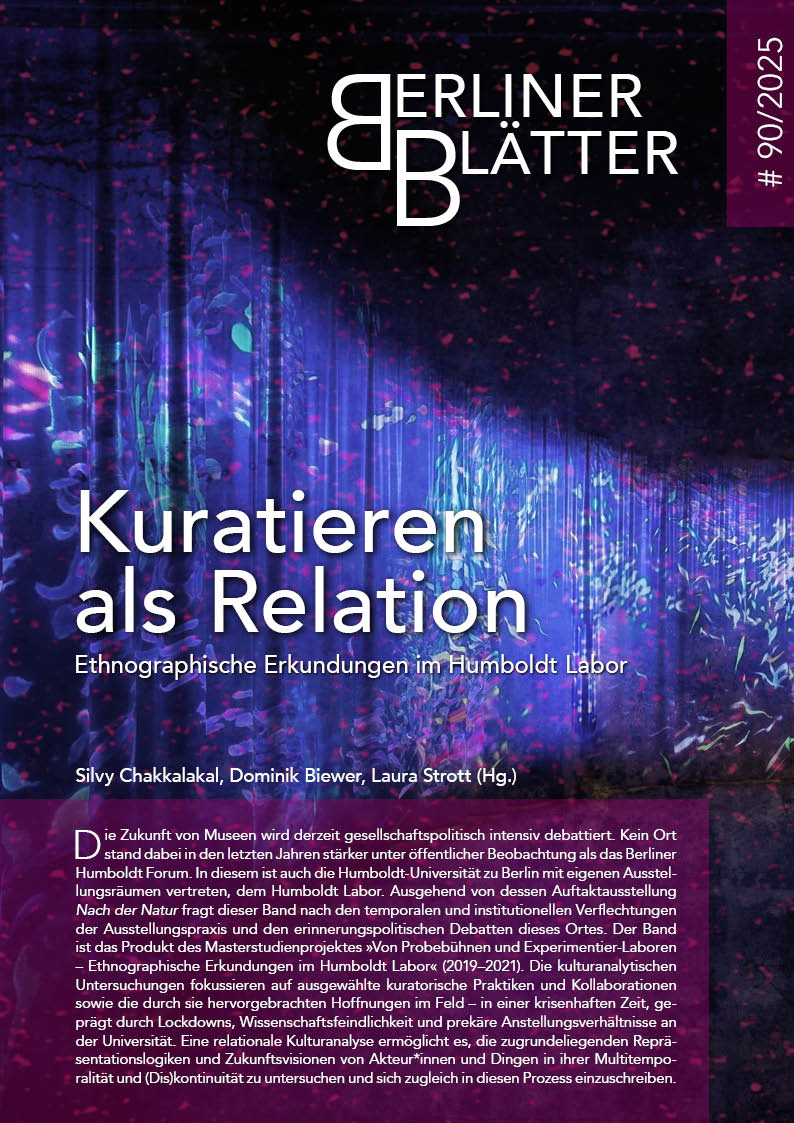Entangled Histories, Entangled Memories
Ethnographic Inquiries of (Past) Hopes and their Afterlife
DOI:
https://doi.org/10.60789/901199Keywords:
exhibition, colonial history, postcolonial memory, intervention, ethnography, human remains, intervening art, difficult heritageAbstract
From the late 19th to the mid-20th century, the fields of anthropology and medicine were closely intertwined. Here, People and human remains were part of racializing and racist research practices. To this day, many traces can be found within university and museum collections. Traces that are stored in the form of specimens, casts, or skeletal parts of these people. The following article examines ideas of the future as envisioned by scientists of this time. Furthermore, it investigates how institutions of knowledge production that succeeded them are addressing this difficult legacy today and what futures emerge as a result. This is explored through relational cultural analysis of the Humboldt Labor, an exhibition space of the Humboldt-Universität zu Berlin, as well as the Otto Suhr Institute at Freie Universität Berlin, which is located in the former buildings of the Kaiser Wilhelm Institute for Anthropology, Human Heredity and Eugenics (1927 - 1945). In relation to the artistic intervention Who is ID 8470? by the artist and researcher Tal Adler, the connections to other objects in the Humboldt Labors exhibition as well as to the project History of Ihnestraße 22 are examined. In this process, it becomes apparent that pasts are not self-contained, but are actively entangled with presents and futures.
Downloads
Published
How to Cite
Issue
Section
License
Copyright (c) 2025 Laura Strott

This work is licensed under a Creative Commons Attribution-NonCommercial-ShareAlike 4.0 International License.








